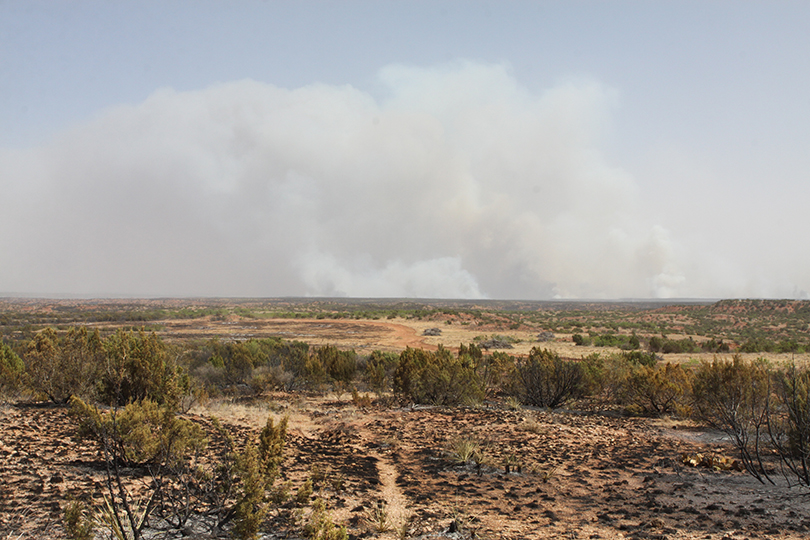High winds, thick brush and dry conditions could make the Lone Star State a tinderbox for wildfires.
The record amount of rain received in 2015 doesn’t eliminate the risk for wildfires in 2016. It might actually increase the chances. And homeowners and landowners should prepare now to reduce the risk of a wildfire reaching their property.
Dr. Ted McCollum, Texas A&M AgriLife Extension beef cattle specialist in Amarillo, says winds are expected to be high across the High Plains in the coming weeks and the conditions are right for wildfires to start with any ignition source.
“Folks might be wanting to get their lawnmowers out to keep the dry grass around their homes short, and ranchers will need to be checking their water supplies and fire suppression equipment,” McCollum said.
Any spark could start a wildfire in these conditions. Motorists who throw their cigarettes out along the highway or drag chains could cause sparks.
Fireworks also are another source of wildfires. Texas HB 1150 took effect Sept. 1, 2015 and allows for a total of 6 fireworks days in the Lone Star State.
County commissioners have to approve the sale of these fireworks for these additional days in advance, David Holt, a concerned landowner from Scurry County, said in an interview with the TFB Radio Network.
He noted they also require the Texas Forest Service to monitor the moisture conditions in these counties.
“Commissioners consult with some of their rule constituents about what problems they might foresee with these additional holidays—being Texas Independence Day, San Jacinto Day, Memorial Day—which occur during the spring when it’s typically windier times of the year. And what kind of potential fire hazards that these fireworks might present to their properties,” Holt said.
According to AgriLife, steps landowners can take to prepare for wildfires include:
– Develop an escape or evacuation plan.
– Place fire extinguishers in all barns, vehicles and tractors. Check extinguishers periodically for charge.
– Keep barns and buildings clean of trash and other combustible materials such as hay, lumber and empty feed sacks.
– Make sure your farm has an adequate water supply.
– Park tractors and implements away from combustible materials.
– Keep above-ground fuel storage tanks at least 40 feet from buildings.
For more information visit, http://texashelp.tamu.edu/004-natural/fires.php.

